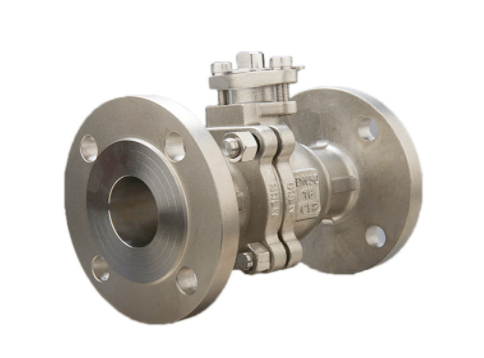Ball valves play a vital role in everyday life as they are used every day, for example in bicycles or cars, jet planes or any industry. Valves come in different sizes and shapes, each with different dimensions, functions and applications.
Ball valves are available in five general purpose bodies including: three piece bodies, two piece bodies, single body top inlet, split body and welded valves. They make an excellent choice for controlling a variety of applications, and sometimes they outperform any other valve with less control in throttling applications.
They provide leak-proof service and can be opened and closed quickly. They are smaller and lighter in size compared to gate valves.
Gate or globe valves do not have the flexibility of multiple designs, so it reduces the number of valves required.
These valves are manufactured in different sizes and shapes, providing flexibility of choice.
High quality valves provide safe service at high temperatures and pressures, and they have less control than other valves.

Ball valves can have multiple ports, which are openings in the valve. Two-way ball valves have two ports and are used for traditional on/off control. Multi-way valves (3-way, 4-way, etc.) are used in applications where multiple media sources are required or where the media needs to be diverted in different directions.
Ball valves have ports that can be opened or closed manually or by actuation to control the media. The manual option requires a handle or lever and an operator to control the valve. Electric, hydraulic and pneumatic actuation does not require an operator to control the valve. Actuation is ideal for complex control systems or remote areas that cannot be easily accessed by an operator.
Regular and preventive maintenance has a direct impact on the life of a ball valve. As the name implies, preventive or predictive maintenance should begin long before you detect any problems with your ball valves. Build the following steps into your maintenance schedule.
A properly installed ball valve is much less likely to require repair or replacement. Make sure the engineer installing the valve is experienced and knowledgeable in ball valve installation and maintenance.
Clean valves last longer because debris hardly ever accumulates and negatively affects the performance of the piping system. Use a towel to wipe any dirt, oil, or dust from the valve housing and a wire brush to remove any buildup on the stem or other moving parts. Clean the ball valve at least once a year, or more frequently if there is a lot of dirt or dust in the plant environment.
Lubrication allows the ball valve to operate smoothly and prevents wear. Lubrication also helps improve the effectiveness of valve seals, provided it is applied properly. Insist on synthetic, water-insoluble, oil-based lubricants; avoid any clay or solid lubricants that may accumulate in the valve cavity. Be sure to select a lubricant that is compatible with the valve material and system media.
Have your valve inspected regularly by a skilled inspector. Once a year is ideal for most applications, but ball valves in high pressure and high cycle applications should receive more frequent inspections.
PIPEFUN has a wide range of valves manufactured to meet specific customer needs, including ball valves designed with the latest technology and suitable for critical operations. Our valves are easy to use, easy to maintain, low maintenance, high quality and corrosion resistant. In addition, our products include flanges, custom fittings and corrosion resistant piping. If you have a need, please contact us to purchase.
Copyright © Hebei Pipefun Pipe and Fitting Facility Co., Ltd. All Rights Reserved | Sitemap